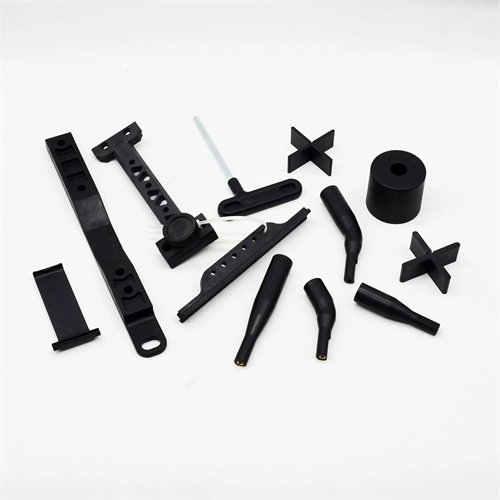Injection mold exhaust method
The venting of injection molds is crucial to the quality of the product. If the venting is poor, air will be trapped during the molten material filling process, resulting in defects such as bubbles, material shortages, and burning in the product. Common venting methods include parting surface venting. Parting surface venting is to set a small gap between the parting surface of the movable mold and the fixed mold of the mold, and use the gap between the opening and closing of the mold to expel the air in the cavity. This is the simplest and most widely used venting method. The size of the gap must be strictly controlled, usually between 0.02-0.05mm, to ensure that the air is discharged smoothly and to prevent the molten material from overflowing and forming flash. For small and medium-sized molds, a venting groove can be opened on the periphery of the cavity on the parting surface. The length is generally 5-10mm, and the width depends on the size of the cavity to ensure smooth venting.

Venting by exhaust grooves is a method used when there is insufficient exhaust on complex products or parting surfaces. That is, a special exhaust groove is opened at the end of the mold cavity, where the molten material is last filled. The design of the exhaust groove must follow certain principles. Its depth should be less than the overflow value of the plastic. The overflow values of different plastics are different. For example, the overflow value of polyethylene is about 0.02mm, and that of polyoxymethylene is about 0.04mm. The depth of the exhaust groove needs to be adjusted accordingly. The width of the exhaust groove can be slightly larger to increase the exhaust area, usually 3-5mm, and the length is determined according to the cavity structure. It generally extends to the outside of the mold so that the exhausted gas can directly lead to the atmosphere. For products with structures such as ribs and bosses, exhaust grooves need to be set at the ends of these structures to avoid dissatisfaction due to gas accumulation.

Exploiting the clearances between mold components is a clever way to vent air. The mold’s moving parts, such as the push rod, guide pin, and guide sleeve, have clearances between them and the mold plate. These clearances can be used to expel air from the cavity. For example, the clearance between the push rod and the push rod hole is typically 0.01-0.03mm. When the push rod is positioned at the bottom or side of the cavity, gases generated during molten material filling can escape through this clearance. However, it’s important to note that this method has limited exhaust capacity and is only suitable for small parts or when the amount of gas is low. Furthermore, the uniformity of the clearances must be maintained to prevent molten material from overflowing. Furthermore, these clearances must be cleaned regularly to prevent clogging by impurities that could affect the venting effect.

Venting through inserts and joints is suitable for large or complex molds. When the mold cavity is composed of multiple inserts, the joints between the inserts can be designed as venting channels. During insert machining, the flatness and fit of the joint surfaces are ensured, creating a small gap between the joints to facilitate venting. This method eliminates the need for additional venting slots, saving mold processing costs. The venting location is closely integrated with the cavity structure, resulting in effective venting. However, insert machining requires high precision. If the gap between the joints is too large, the melt will overflow; if the gap is too small, effective venting will be impossible. Therefore, precise machining and assembly are required to control the gap size.

For some products with special structures, exhaust plugs can also be used for exhaust, that is, special exhaust plugs are installed in the difficult-to-exhaust areas of the cavity. Exhaust plugs are usually made of powder metallurgy materials and have a porous structure that allows gas to pass through but prevents the molten material from overflowing. The exhaust plug is installed at the end or deep cavity of the mold cavity. When the molten material is filled, the gas can be discharged through the micropores of the exhaust plug, effectively solving the exhaust problem of products with complex structures. The selection of the exhaust plug needs to be determined according to the type of plastic and the molding pressure of the product. During use, the plastic residue on the surface of the exhaust plug needs to be cleaned regularly to prevent blockage and affect the exhaust performance. Reasonable selection and design of exhaust methods can significantly improve the molding quality and production stability of the product.
